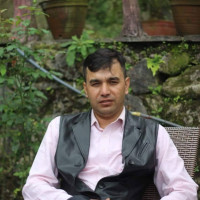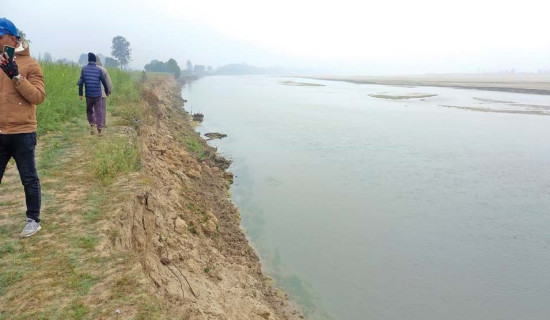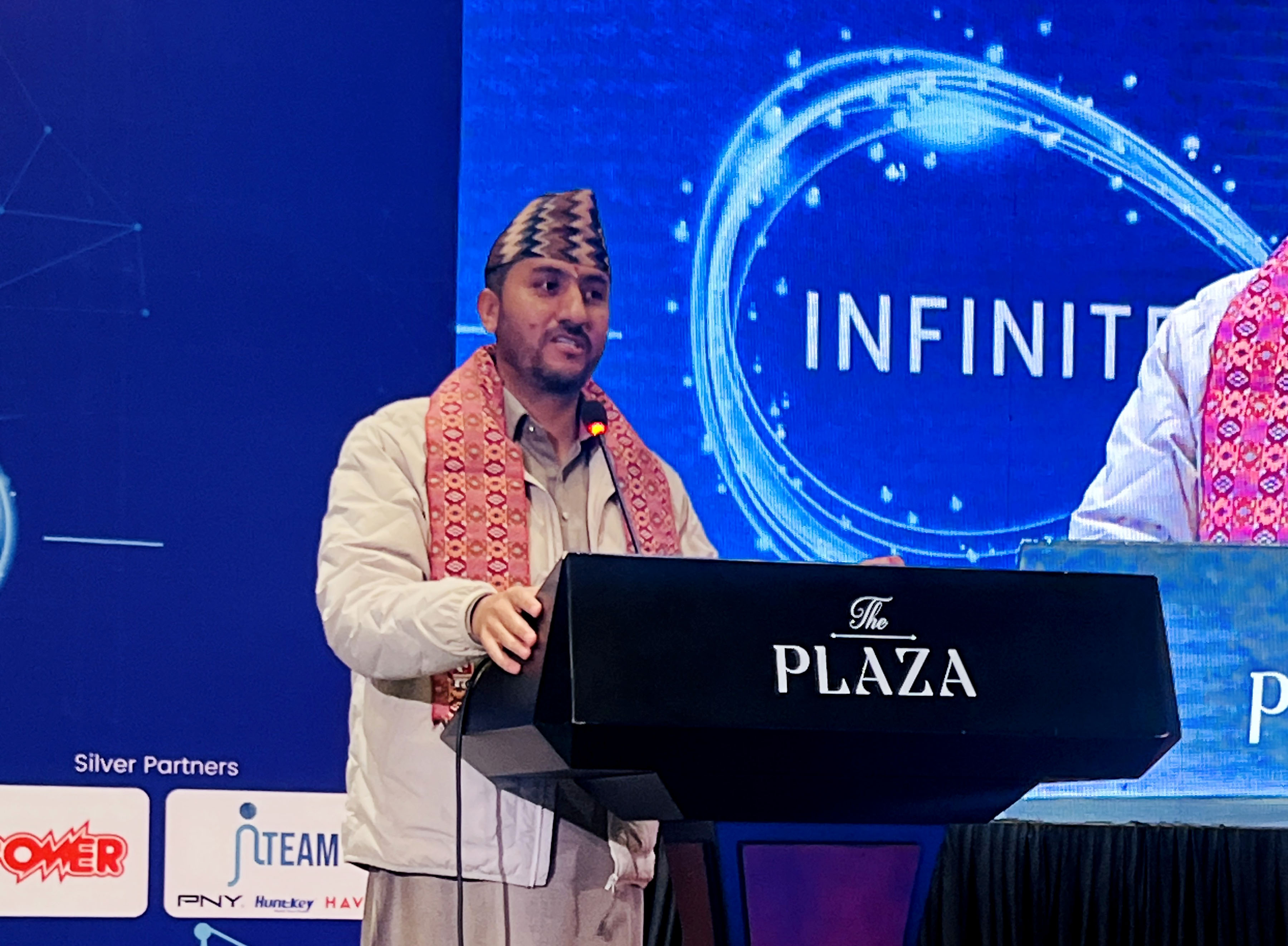- Sunday, 21 December 2025
Defenseless due to Disaster
It happened 44 years ago when preparations were being made in the country for plebiscite over whether improved Panchayat is good or multiparty system. Jay Ram Tharu was just four years old then. Jay Ram has a dim memory about how he clung to his grandpa’s hand while they migrated from Bhawaniyapur to Joraiya. He knew about the reasons for the migration much later. His grandfather had moved to Joraiya field which lay two kilometers away from Bhawaniyapur out of fear that their shelter would be swept away by the erosion of the Rapti River. However the same Joraiya turned out to be unsafe. Jay Ram’s family had again to migrate from Joraiya, which now lies at Ward no 6 of Rapti Sonari Rural Municipality in Bake district. Like his grandfather, Jay Ram shifted some two kilometers away from Joraiya as the Rapti River started to erode their land in 2006. But, unlike in their first migration when they had come to their own land, this time they settled in the edge of a forest, a public land. To save their life and properties 90 families which have no different story from that of Jay Ram have been staying in make-shift huts for the last 17 years at an elevated land in Mohanpur forest area.Despite having been compelled to live in the forest, Jay Ram’s heart has stuck to Joraiya. Owing to continuous erosion of the Rapti, all his field area including the house has now become sandy bank of the river. We urged Jay Ram to show us the area where his field was at Joraiya. As we reached the river bank and started to talk, Jay Ram reminisced days some 17 years ago. “We would have 50 per cent surplus food grains for sale that would suffice to cover family expenses.” In his land measuring 2 Bigha and 3 Kaththa of land, Jay Ram used to grow 140 quintals (1 quintal is equal to 100 kgs) of rice and 11 quintals of mustard. But now he is a wage worker and thus earns bread for family. “Now, agriculture produces do not suffice even for six months. I along with my son and daughter are daily wage workers,” he said. Studies of his son and two daughter broke apart when they were displaced by the Rapti. They studied up to grade 8. And now they go for work at Kohalpur bazar.Jay Ram is more frustrated now because even after 17 years since the Rapti started eroding their land, no work has been initiated to contain the erosion and save the field. No government in this period has listened to the plight of the Joraiya farmers like Jay Ram. Due to failure to initiate measure to stop erosion, field that would be covered with swaying paddy plants have been barren sandy bank. 10 families at Sauliya Tol and eight families at Thulopurano Tol of Joraiya have so far remained safe from flood and erosion of the Rapti. But they are also at risk of flood-induced calamity.Mohanpur jungle has become a shelter for families like that of Jay Ram who have lost their houses and farmland to flood. About 255 families have been staying here in temporary shelters they have made. With the increasing incidents of floods and landslides, number of farmers similar to those of Joraiya who lost houses and means of livelihood such as farmland has increased.On the basis of three comprehensive reports produced by the government and the data of farmland lost to flood, landslides and erosion at 842 places that we collected as well as the analysis of some 220 news reports related to flood and landslides, we can conclude 'loss of farmland is terrible.' Agricultural production is found to have been put in priority in the multi-year projects of the government. !function(){"use strict";window.addEventListener("message",(function(a){if(void 0!==a.data["datawrapper-height"]){var e=document.querySelectorAll("iframe");for(var t in a.data["datawrapper-height"])for(var r=0;r



